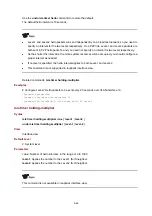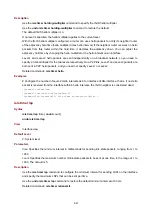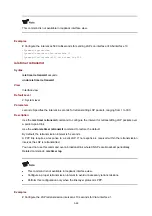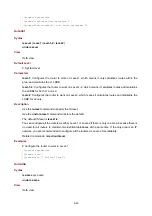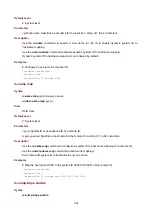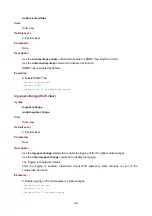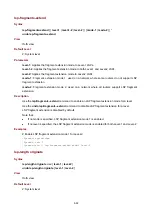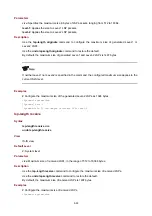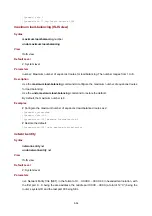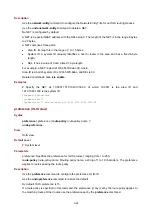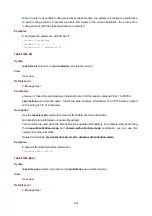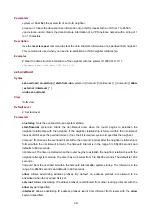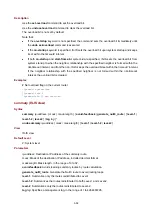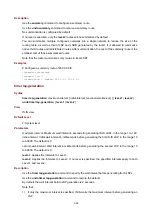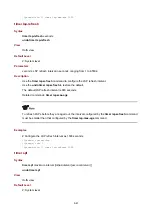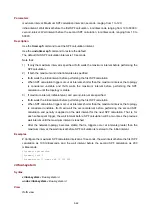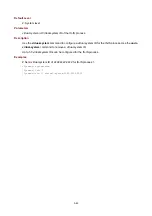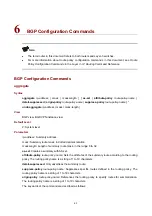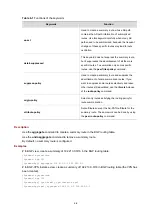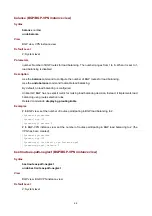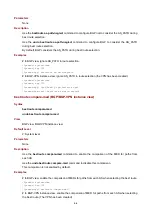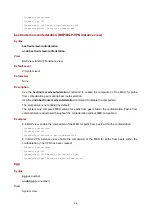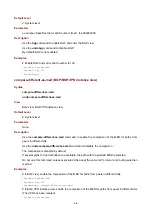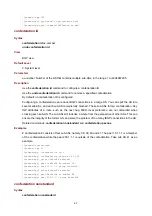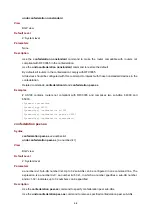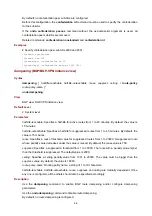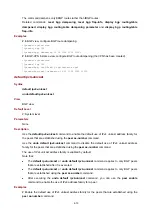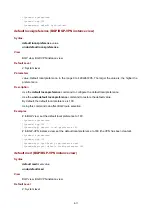
5-60
2) If both the maximum and initial intervals are specified:
z
IS-IS waits the initial interval before generating the first LSP.
z
If the network topology is unstable, that is, triggers occur at intervals shorter than the maximum
interval, IS-IS waits the maximum interval before generating the first LSP until the network
topology is stable.
3) If the maximum, initial, and second wait intervals are specified:
z
IS-IS waits the initial interval before generating the first LSP.
z
If the network topology is unstable, that is, triggers occur at intervals shorter than the maximum
interval,, IS-IS waits the
second-wait-interval
before generating the second LSP and penalty is
applied on the wait interval before generating the next LSP. That is, for each subsequent trigger,
the wait interval before generating the LSP will be two times the previous wait interval until the
maximum interval is reached.
z
After the network topology is stable; that is, triggers occur at intervals greater than the maximum
interval, the wait interval before generating LSPs is restored to the initial interval.
Examples
# Set the maximum, initial, and second wait intervals to 10 seconds, 100 milliseconds and 200
milliseconds respectively.
<Sysname> system-view
[Sysname] isis 1
[Sysname-isis-1]timer lsp-generation 10 100 200
timer lsp-max-age
Syntax
timer lsp-max-age second
s
undo timer lsp-max-age
View
IS-IS view
Default Level
2: System level
Parameters
seconds
: Specifies the LSP maximum aging time in seconds, ranging from 1 to 65535.
Description
Use the
timer lsp-max-age
command to set the LSP maximum age in the LSDB.
Use the
undo timer lsp-max-age
command to restore the default.
The default LSP maximum age is 1200 seconds.
Related commands:
timer lsp-refresh
.
Examples
# Set the maximum LSP age to 1500 seconds.
<Sysname> system-view
[Sysname] isis 1

